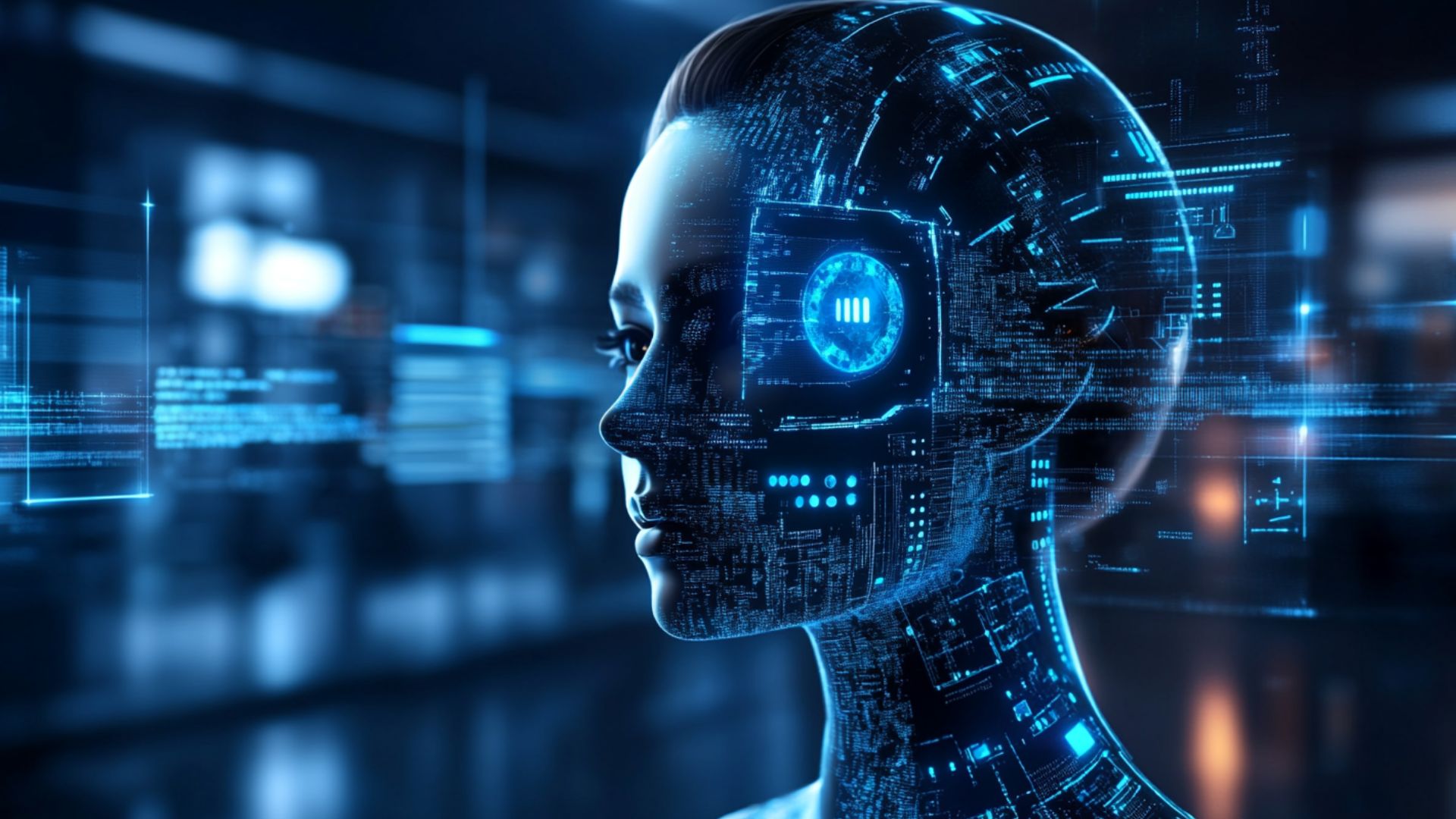Digital Employee Experience: Strategy, Tools, and Solutions

Worker engagement — how employees interact with technology at work — is becoming increasingly important as companies rely more on digital solutions. Today’s workplace thrives on tools that streamline tasks and connect teams. Digital employee experience (DEX) shapes how employees feel about their jobs, boosting engagement, productivity, and satisfaction. Poor tech experiences frustrate workers, while seamless ones empower them. Businesses now prioritize DEX to attract talent and improve performance. Digital tools include collaboration platforms, automation software, and AI assistants. They redefine how work gets done.
Strategies focus on user-friendly design, accessibility, and support. Employees expect tech that’s fast, intuitive, and reliable. A strong DEX aligns tools with company goals and employee needs. It's not just about tech — it's about people. Key components include digital workplace platforms, employee feedback systems, and personalized solutions. Together, they create a smooth, efficient work environment. As remote and hybrid work rise, DEX becomes even more critical. It’s the future of work, driving success for both employees and organizations.
Understanding Digital Employee Experience
While traditional workplace experiences focus on physical spaces and in-person interactions, DEX centers on digital interactions shaped by the tools, platforms, and systems employees use daily. Digital transformation has revolutionized workplaces, making DEX a priority. Unlike traditional approaches, digital transformation emphasizes seamless, tech-driven experiences over manual processes.
Digital transformation impacts work in several ways:
- Remote Work: Cloud-based tools enable employees to work from anywhere. They reduce reliance on office spaces.
- Collaboration Tools: Slack or Microsoft Teams foster real-time teamwork, even across distances.
- Virtual Engagement: Video calls and digital events replace face-to-face meetings, keeping teams connected.
These shifts highlight the importance of digital employee experience management. It’s the practice of designing, monitoring, and improving DEX to meet employee needs. A strong framework goes beyond technology, tying into employee wellbeing, organizational culture, and operational efficiency. Employees now expect intuitive tools that save time and reduce stress. Poor DEX, like slow software or complex interfaces, harms morale and productivity. Good DEX, however, boosts satisfaction and retention.
The framework encompasses key areas:
- Employee Wellbeing: Tools should support work-life balance, not overwhelm users.
- Technology: Reliable, user-friendly systems are the backbone of DEX.
- Organizational Culture: A digital-first mindset ensures tech aligns with company values.
As workplaces evolve, digital employee experience has become a strategic focus. It’s about creating an environment where technology empowers people, not frustrates them. Organizations can enhance engagement and performance. This requires blending digital innovation with human-centric design. DEX isn’t just a trend. It’s a fundamental shift in how work happens.
The Importance of a Positive Digital Employee Experience
A well-designed DEX transforms workplaces. It drives key benefits for employees and organizations. Happy employees stay longer, work harder, and feel loyal. Companies that prioritize digital employee experience see tangible results.
Here’s why it matters:
- Higher Retention: Smooth tech reduces frustration. Employees at Google, with its intuitive tools, rarely leave due to tech issues.
- Increased Productivity: Fast, reliable systems save time. Slack’s collaboration tools help teams finish projects quicker than email-heavy firms.
- Greater Loyalty: A strong DEX shows employees they’re valued. Microsoft’s focus on user-friendly platforms builds trust and commitment.
Digital employee experience management is the key to success. It ensures tools align with employee needs. Companies like Zoom excel by offering simple, effective video solutions for remote teams. In contrast, firms neglecting DEX struggle. Outdated systems at some banks, for example, slow work and push talent away. Research shows organizations with strong DEX strategies outperform rivals by 25% in productivity. They also cut turnover costs. A positive DEX isn’t optional. It’s essential. It boosts morale, efficiency, and loyalty. Companies that invest in it win the talent war and thrive.
Key Factors Affecting Digital Employee Experience
The DEX hinges on several critical factors. These elements shape how employees perceive their workplace. A strong DEX boosts satisfaction, while weak spots create frustration. Understanding these factors is vital for a thriving employee digital experience.
Here are the key influences:
- Accessibility of Digital Tools: Tools must be easy to reach. If employees struggle to log in or find apps, productivity drops. Cloud platforms like Dropbox ensure access anytime, anywhere.
- User Experience (UX): Intuitive design matters. Clunky interfaces, like those in outdated HR systems, annoy users. Slack’s simple layout, however, keeps employees engaged and efficient.
- Personalized Engagement: Tailored tech builds connection. Generic tools feel impersonal. AI-driven platforms like Salesforce adapt to individual roles, enhancing relevance.
- Seamless Integration with Work Processes: Tools should flow with workflows. Separate email and project apps waste time. Microsoft Teams integrates chats, files, and tasks, streamlining work.
These factors directly impact perceptions. Accessible, user-friendly tools signal a company cares about efficiency. With its integrated systems, employees at Amazon feel supported, not hindered. Like some legacy software firms, poor UX or integration breeds resentment. Personalized engagement makes workers feel valued. Think of Netflix’s custom dashboards for staff versus one-size-fits-all setups elsewhere.
A strong digital workplace employee experience relies on balance. Accessibility ensures inclusion, UX drives adoption, personalization fosters ownership, and integration cuts friction. Together, they create a positive vibe. Employees judge their environment by how tech helps or hurts their day. Companies that nail these factors build trust and loyalty. Those who don’t risk disengagement. DEX isn’t just about tools. It’s about crafting a workplace where technology empowers people.
Key Strategies for Enhancing Digital Employee Experience

Improving the DEX requires intentional strategies. Organizations must build a tech-enabled environment that supports communication, learning, and well-being. Practical digital employee experience tools are paired with leadership and feedback. They create a cohesive workplace. Here’s how to do it:
| Strategy | Description | Example |
| Leadership Commitment | Leaders must prioritize DEX and model tech adoption. Their buy-in drives cultural shifts. | Executives use Teams daily. |
| Employee Feedback | Regular input identifies pain points and preferences. It ensures tools meet real needs. | Surveys on app usability. |
| Technology Integration | Seamless systems reduce friction. Integrated digital employee experience tools boost efficiency. | Linking Slack with Asana. |
| Communication Focus | Video calls and chat apps keep teams connected. This applies even to fully distributed teams. | Zoom for all-hands meetings. |
| Learning Opportunities | Digital platforms for training upskill employees. Access to learning fosters growth. | LinkedIn Learning subscriptions. |
| Well-being Support | Tech should ease stress, not add to it. Features like wellness apps promote balance. | Integrating wellness apps like Headspace into HR portals. |
Leadership commitment sets the tone. When executives champion DEX, employees follow. For example, a CEO using collaboration tools signals their value. Employee feedback keeps strategies grounded. Pulse surveys reveal whether a tool like Zoom works or frustrates. Technology integration ties it together. Disconnected systems confuse users, but Microsoft 365 simplifies tasks.
Communication thrives with the right employee digital experience tools. Slack channels cut email clutter, while learning platforms like Coursera empower growth. Well-being matters too. Tools with downtime reminders or mindfulness features show care. Together, these strategies craft a supportive DEX. Organizations that blend leadership, feedback, and tech outperform others. A strong DEX isn't just optional — it's a competitive edge.
Personalization and Customization in Digital Platforms
Personalization in platforms transforms the employee experience in the digital workplace. It tailors tools to fit individual needs, preferences, and goals. Generic systems frustrate users, but customized ones boost engagement and satisfaction. Employees feel valued when tech adapts to them, not vice versa. This approach enhances productivity and strengthens the overall experience.
Here’s why it matters and how it works:
- Meets Specific Needs: Personalized platforms deliver relevant features. A salesperson gets CRM shortcuts, while a designer sees creative tools first.
- Boosts Engagement: Tailored interfaces keep employees invested. Netflix’s staff dashboards, for instance, adjust to roles, making work feel intuitive.
- Supports Goals: Customization aligns tech with personal objectives. Goal-tracking apps like Trello adapt to individual projects and drive focus.
- Reduces Friction: AI-driven digital employee experience solutions predict needs. Tools like Microsoft Copilot suggest actions based on habits, saving time.
Technologies powering personalization include:
- AI-Driven Recommendation Systems: These analyze behavior to offer smart suggestions. Salesforce uses AI to highlight key client data for reps.
- Customizable Dashboards: Platforms like Monday.com let users tweak layouts to prioritize what matters most to them.
- Role-Based Access: Systems like SAP SuccessFactors adjust features by job type, ensuring relevance.
- Learning Algorithms: Tools like LinkedIn Learning recommend courses based on skills gaps. They enhance growth.
Personalization improves the digital employee experience solutions. It makes tech feel human-centric. AI tools anticipate needs, cutting wasted effort. Think about how Gmail's smart replies speed up communication. Custom dashboards empower users to work their way. Engagement rises when employees don’t fight rigid systems. Companies using employee solutions like these see higher satisfaction and retention. It’s simple: personalized tech respects individuality. It turns the workplace into a supportive, efficient hub.
Enhancing Communication and Collaboration Through Digital Tools
Digital employee experience, by definition, refers to how employees interact with technology in their workplace. Communication and collaboration solutions create a connected, efficient environment. They break down silos and foster teamwork, transforming the DEX landscape. Here’s how they contribute:
- Instant Communication: Messaging platforms like Slack speed up interactions. Teams chat in real-time, unlike slow email chains.
- Virtual Face-to-Face: Video tools like Zoom bridge distances. Remote workers join meetings, feeling included, not isolated.
- Task Coordination: Project management systems like Asana align efforts by ensuring everyone sees the same deadlines, reducing confusion.
- Effortless Sharing: File platforms like Google Drive centralize resources. Teams access docs instantly, cutting delays.
These digital employee experience examples show their impact:
- Breaking Silos: Slack channels unite departments. Marketing and sales share updates, avoiding disconnects common in siloed firms.
- Fostering Teamwork: Zoom’s breakout rooms spark group brainstorming. Ideas flow freely, unlike rigid in-person setups.
- Streamlining Work: Asana tracks progress across teams. No more hunting for status updates, clarity reigns.
- Boosting Access: Google Drive syncs files globally. A designer in Tokyo edits what a writer in New York started.
The role of employee experience technology shines here. Messaging cuts through noise. Think of a developer pinging a fix instead of drafting emails. Video conferencing shrinks the world, connecting hybrid teams seamlessly. Collaboration tools like Trello visualize workflows, so no task slips through. File-sharing eliminates version chaos, keeping everyone on the same page.
Together, these tools dismantle barriers. Silos crumble as info flows freely, unlike old-school setups where teams hoarded knowledge. Teamwork thrives when tech empowers, not hinders. DEX technology demonstrates this transformation. A well-equipped workforce is a united one. Efficiency soars, and connection deepens. These tools transform work from a daily grind into a shared mission.
Tools and Technologies for Digital Employee Experience
A strong DEX method relies on the right tools and technologies. These solutions enhance engagement, streamline processes, and improve management. A digital employee experience platform integrates these elements, creating a cohesive, efficient workplace. Here’s how key tools contribute:
- Employee Engagement Platforms: Tools like Culture Amp gather feedback. They reveal morale trends, helping leaders act fast.
- Performance Management Systems: Platforms like Lattice track goals. Managers gain insights into progress, replacing vague annual reviews.
- HR Technology: Systems like Workday automate onboarding. New hires start smoothly, cutting paperwork chaos.
- Collaboration Software: Apps like Microsoft Teams connect teams. Real-time chats and file shares boost teamwork.
These tools deliver specific benefits:
- Provide Valuable Insights: Culture Amp’s analytics spot disengagement early. Leaders tweak the DEX strategy based on data.
- Streamline Processes: Workday’s HR workflows ditch manual forms. Tasks that took days now take hours.
- Enable Effective Management: Lattice’s dashboards show performance at a glance. Managers can coach employees rather than simply critiquing performance.
- Enhance Connectivity: Teams’ video calls link remote workers. Silos fade as communication flows.
A digital employee experience platform ties these together. Take Slack, it pairs with HR tools to announce updates, keeping everyone in sync. Or consider BambooHR, which tracks leave while feeding data to performance systems. These integrations save time and reduce friction. Engagement platforms like Qualtrics pulse-check satisfaction and guide strategy shifts. Performance tools like 15Five align individual wins with company goals, making reviews meaningful.
These technologies empower employees and leaders alike. They cut busywork—compare automated payroll to the headaches of spreadsheet-based systems. Insights from tools like Peakon reveal what employees value, shaping retention plans. Collaboration software ensures no one’s left out, even across time zones. Blending these into a DEX strategy is pivotal. Organizations create an efficient, insightful, and human-focused workplace.
Implementing Solutions for a Seamless Digital Employee Experience

Creating a seamless employee experience requires the strategic implementation of digital solutions. Companies can integrate technology and employee experience to boost cohesion. Using a management platform streamlines this process. Here’s how to do it effectively:
- Assess Needs: Survey employees to identify tech gaps. Are slow systems or poor communication the issue?
- Select Platforms: Choose Microsoft Teams or Workday. They fit the company goals and user needs.
- Roll Out Systems: Pilot with a small group first. Train users to ease adoption, avoiding overwhelm.
- Measure Success: Track metrics like engagement or task speed. Use feedback to tweak the employee experience management platform.
Tips for overcoming challenges:
- Resistance to Change: Show benefits clearly, e.g., Slack cuts email time by 30%. Involve champions to lead by example.
- Tech Overload: Start simple. Roll out one tool, like Zoom, before adding more complexity.
- Poor Training: Offer hands-on sessions. A quick Asana tutorial beats a dry manual.
- Integration Issues: Test compatibility first. Ensure new technology and DEX tools sync with existing systems.
The process begins with understanding pain points. Remote teams may feel disconnected. Qualtrics is an example of a DEX management platform. Selecting the right platform addresses this with feedback loops. Rolling out gradually prevents chaos. Consider having a department test Trello before rolling it out company-wide. Success metrics, like faster project delivery post-adoption, prove value.
Challenges like resistance fade with clear wins. Employees love tools that save time. Overload shrinks with phased launches. Training bridges skill gaps, while integration checks avoid tech clashes. A solid employee experience digital transformation blends assessment, smart choices, and support. It turns disjointed workflows into a unified and efficient experience. This keeps employees engaged and productive.
Measuring the Success of Digital Employee Experience Initiatives
Measuring a DEX strategy ensures it delivers results. Organizations need clear metrics to gauge impact. Worker experience technology provides the tools to track success. Companies can refine their efforts by focusing on satisfaction, productivity, and retention. Here’s how to do it:
- Employee Satisfaction: Surveys like Qualtrics measure happiness with tech. High scores signal a winning digital employee experience strategy.
- Productivity: Analytics track output like tasks completed in Asana. Faster work shows that tools are practical.
- Retention: HR systems like BambooHR monitor turnover. Lower rates suggest employees value their digital experience.
- Engagement Levels: Feedback loops via Slack polls reveal usage. Active participation reflects strong adoption.
Tools and methods to gain insights:
- Surveys: Platforms like SurveyMonkey ask direct questions. For example, “Does this tool save time?” Answers guide tweaks.
- Feedback Loops: Tools like Culture Amp collect real-time input. Employees flag issues, keeping strategies responsive.
- Performance Dashboards: Systems like 15Five show progress in goals. Metrics tie tech to outcomes.
- Data Analytics: Employee experience technology, like Tableau, tracks usage patterns. Low logins to a new app signal trouble.
Start with baseline data, such as pre-Zoom call times. Post-implementation, compare productivity. If satisfaction jumps 20% after adding Microsoft Teams, that’s success. Retention holding steady after a DEX strategy rollout shows stability. Analytics might reveal that 80% of staff use a new platform daily, proving it’s working.Challenges like survey fatigue need short, focused questions. Misread data risks wrong fixes. Cross-check with feedback. These tools, surveys, analytics, and loops turn guesses into facts. They show whether worker experience technology boosts morale or cuts stress. Success isn’t just tech deployment. It’s measurable gains in employees' feelings and performances. For more information on implementing effective DEX strategies, consult with digital workplace specialists.


